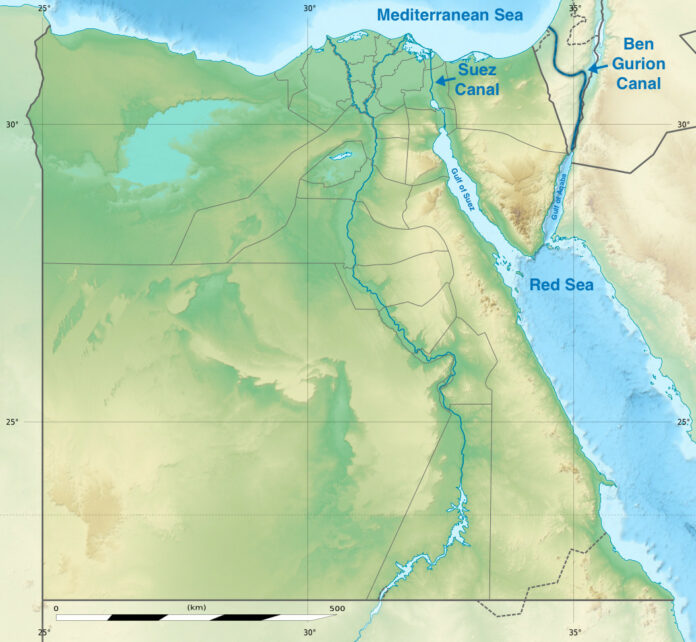
Yemeni Houthis have all but stopped maritime trade moving through the Red Sea. For Israel, that means another front to the war, with Gaza and southern Lebanon being the first two. Why is this important?
The Red Sea contains three openings for commercial ships to pass from east Asia and Africa to the Middle East, Europe and as far as the Americas. The initial opening, the Gulf of Aden or Bab el-Mandeb, sits at the southern tip of Yemen and sees 33,000 ships pass to or from the Red Sea annually, according to the maritime intelligence outlet, Dryad Global. The Suez Canal in Egypt passes 23,000 of those, says Hellenic Shipping News, meaning that close to one third of Red Sea traffic through the Gulf of Aqaba and up to the Israeli port of Eilat.
According to Marine Insight, “Minerals, phosphates, potash and ores are exported from Eilat worldwide. It deals with imports of timber, construction material, foodstuff and automobiles. Around 2,110,000 tonnes of dry cargo, 75,000 vehicles and more than 50,000 TEUs are handled at this facility annually. In 2018, it handled 176,000 tonnes of general cargo and 104,950 vehicles.”
Israel has five other ports, all of which are located in the Mediterranean Sea, but also receive traffic from the Red Sea.
This traffic was effectively shut down after the biggest shipper in the region, Maersk, stopped their activities in the Red Sea on December 15, according to Politico. Shipping Watch adds German shipping company Hapag-Lloyd, French CMA CGM, and the world’s largest shipping company, Swiss MSC to the list.
One maritime news outlet says that part of the cargo of Maersk, in particular, is US military cargo.
When this “main artery for trade between the Mediterranean Sea and the Indian Ocean” is blocked, it affects “about US$700 billion a year,” writes Ahmad el-Deeb of Sana’a Center for Strategic Studies. ‘Some 4 million barrels of oil pass through Bab al-Mandab Strait every day en route to Europe.”
Saudi Arabia also ships oil through the Red Sea, and with the halt to transport, this could mean higher oil prices. Although the COP28 is encouraging a phase down of fossil fuels, the world is not yet independent of them, and the conflict appears to be spreading.
Politico also says the US is considering strikes against the Houthis to stop the threat to commerce in the Red Sea.
IP Correspondent





